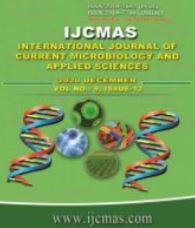


 National Academy of Agricultural Sciences (NAAS)
National Academy of Agricultural Sciences (NAAS)

|
PRINT ISSN : 2319-7692
Online ISSN : 2319-7706 Issues : 12 per year Publisher : Excellent Publishers Email : editorijcmas@gmail.com / submit@ijcmas.com Editor-in-chief: Dr.M.Prakash Index Copernicus ICV 2018: 95.39 NAAS RATING 2020: 5.38 |
All living beings directly or indirectly are threatened by land degradation which is identified as a significant hampering agent for the justifiable development of the economy and societies. Sirohi district, which lies on the Aravalli hills, has been selected to study the spatiotemporal dynamics of land degradation, so as to understand the main contributing factors for its origin. Three season FCC of Resources at LISS III for the 2015-16 period has been used. The Geographic Information System (GIS) is an important tool for the appraisal of the amount of land degradation and its dynamics. Three types of land degradation i.e. severe, moderate and slightly degraded has been mapped, and normal areas without any degradation have also been identified. Waterborne erosion contributes about 20% area under degradation affecting 12-15% villages. The slightly-degraded area occupies for 10-12%, the severely-degraded area covers 6-8% and the moderately-degraded area occupies 2-5%of the entire geographic area. Northwestern area of the district is drained by the Luni River where areas affected by moderate to severe degradation is distributed.Administratively, the slight to moderately-degraded areas are primarily distributed in Sirohi, and Sheoganj whereas Pindwara and Reodar sub-divisions shows areas under moderate to severe degradation.
 |
 |
 |
 |
 |